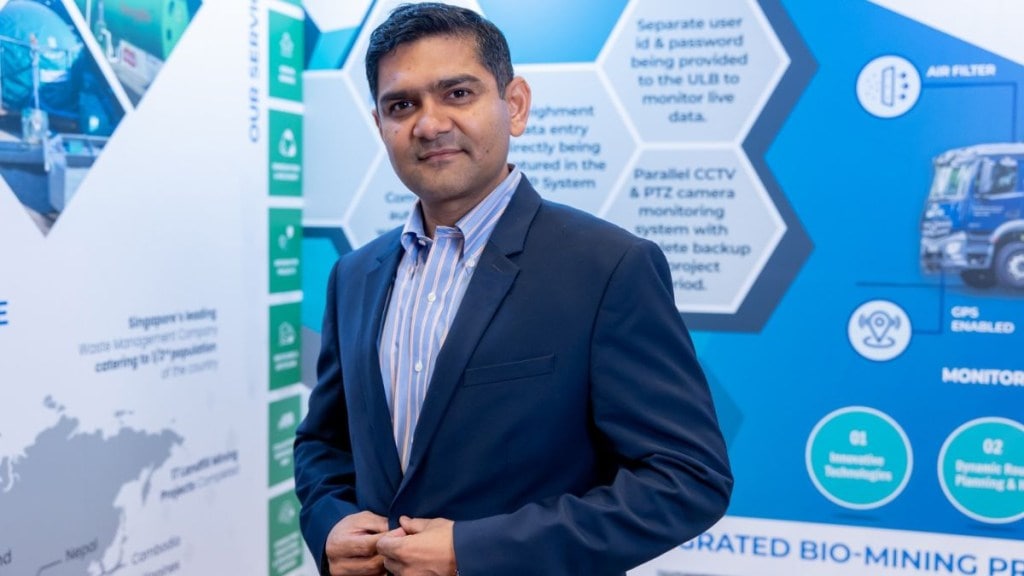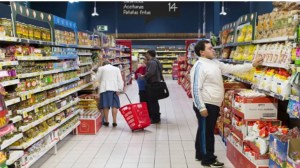As the world is adopting technology on a larger scale, there seems to be a loophole. Prashant Singh, co-founder and CEO of Blue Planet believes that for the development of technology, we first need to ‘wrap up’ the waste made by it. Technology and innovation can be the two major drivers of global sustainable development and social change in the world today.
Top global tech leaders like Google, Microsoft, Amazon, and Apple among others, seem to be aligning their business strategies to focus on sustainability goals. In fact, the Sustainable Development Goals (SDGs), established by the United Nations in 2015, is a call to action to nations to end poverty, protect the planet, and ensure peace and prosperity by 2030. In conversation with Prashant Singh, co-founder and CEO of Blue Planet, on how technology is changing the sustainability landscape.
How do innovative and scalable technological solutions contribute to overall circularity of waste management ?
I think innovative technological solutions plays an important role in increasing the processing efficiencies for fresh waste. And, by leveraging the innovative processing technologies such as Anaerobic Digestion, the proper processing is possible. For example, if you have proper segregation, organics, plastic, and innards will get process separately.
But as far as the processing is concerned, they have to be customized to the Indian conditions. As in India, the moisture content of the waste is significantly higher compared to the developed world. So, segregation has to map with that to manage that level of moisture or water content, so that the efficiency is right. So, after AD technology, we need to use dewatering process. Dewatering process is not used to take out water from mixed waste but is a process used after initial AD process to remove excess water and give us a better quality compost/fertilizer.
Moreover, we need to include these two together to build the right solution where dependence on landfill and waste disposal is minimized.
So how technology is being used in converting solid waste into sustainable sources?
As far as energy production is concerned, there are two, three different ways of how our sector operates. We have around 7 or 10 plants which got installed where the mixed waste gets processed or incinerated to generate electricity.
We also deploy anaerobic digestion or AD technology, where we can convert organic waste into biogas. India still imports about 50% of its natural gas from abroad, and there’s a huge potential for growth, which might come from the CBG aspect of things.
What do you think are the challenges that you face while choosing technology investment?
I think the challenges are the identification, customization and deployment of suitable technologies in India. This is because the technology innovation must be locally done. Getting the technology done from abroad and then customizing it in India will come at a cost, which is also another challenge. Then we need to identify the user market to demonstrate the technologies they want. But all of this comes back at the pricing mechanism .
Another issue could be the government support. The government needs to make sure that they put some kind of subsidies like VGF for innovative and newer technologies.
Do you think robotics can help in managing waste ?
Yes Robotics can help in managing waste but in India it is not practically possible right now due to multiple reasons. First reason is the price point and the affordability of that technology. Even getting a basic business model into the sustainability sector seems very challenging in India. If we try to add robotics into it then the initial CAPEX will go exponentially higher, which will make the project even more costly.
Secondly, to incorporate robotics in waste management we need to have a basic ‘waste segregation’, which is lacking in India. So, robots or optical sensors won’t be able to differentiate from wet and dry waste, for further recycling processes. Contrary to this, in developed countries, it is more feasible because they have a basic level of segregation.
Can you give more explanation of AD technology?
Anaerobic Digestion in a crude manner is trying to replicate, which in crude terms it’s a biomimicry. Biomimicry is what happens inside the stomach of a cow, in terms of how they digest the food and methane gets generated, that’s the process we want to replicate outside in an artificial environment.
We input waste that can be both organic and inorganic. And depending on the usage, it can be directly utilized as a part of a gas like, for example, a replacement for your cooking gas. For example, Tata Motors used it as a replacement for their kitchen fuel. That way we can build a circular economy ecosystem to replace at least 50 to 70% of the gas usage. We have also scaled this up to a 200-tonne facility in Kerala, which will come soon. The concession is signed, the financial closure is done, land is allocated and the construction will start next year.
Do you have any future plans like any new product planning?
We are working on a zero-residue model sustainably. We have been working with the government, policy making bodies with MoHUA and NITI Aayog. Eventually we are trying to standardize some basic quality of the execution process. SOPs have to be defined, so that the quality aspects of the deliverables will be standardized.
I believe using technologies is the key to continue to both build in-house R&D technologies and processes we are leveraging. For example, through our own in-house R&D, we might be the first company where we use landfill soil in the landfill to clean, wash, segregate and upcycle, which can be used as a replacement for M-sand which is used for construction. We have already tested with the L&T test. Hence, L&T has used our material as a part of our process.









